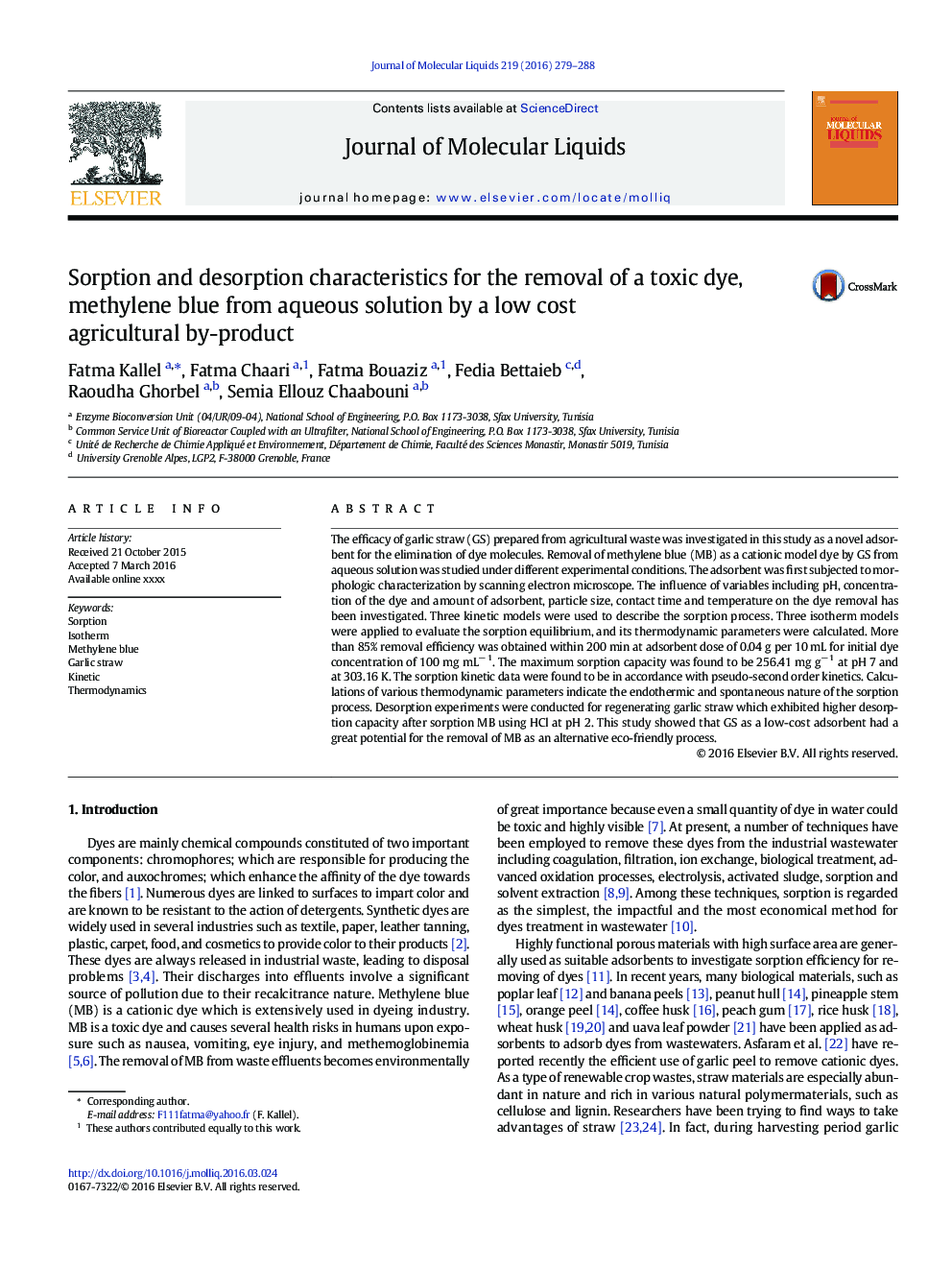| Article ID | Journal | Published Year | Pages | File Type |
|---|---|---|---|---|
| 5410119 | Journal of Molecular Liquids | 2016 | 10 Pages |
Abstract
The efficacy of garlic straw (GS) prepared from agricultural waste was investigated in this study as a novel adsorbent for the elimination of dye molecules. Removal of methylene blue (MB) as a cationic model dye by GS from aqueous solution was studied under different experimental conditions. The adsorbent was first subjected to morphologic characterization by scanning electron microscope. The influence of variables including pH, concentration of the dye and amount of adsorbent, particle size, contact time and temperature on the dye removal has been investigated. Three kinetic models were used to describe the sorption process. Three isotherm models were applied to evaluate the sorption equilibrium, and its thermodynamic parameters were calculated. More than 85% removal efficiency was obtained within 200 min at adsorbent dose of 0.04 g per 10 mL for initial dye concentration of 100 mg mLâ 1. The maximum sorption capacity was found to be 256.41 mg gâ 1 at pH 7 and at 303.16 K. The sorption kinetic data were found to be in accordance with pseudo-second order kinetics. Calculations of various thermodynamic parameters indicate the endothermic and spontaneous nature of the sorption process. Desorption experiments were conducted for regenerating garlic straw which exhibited higher desorption capacity after sorption MB using HCl at pH 2. This study showed that GS as a low-cost adsorbent had a great potential for the removal of MB as an alternative eco-friendly process.
Related Topics
Physical Sciences and Engineering
Chemistry
Physical and Theoretical Chemistry
Authors
Fatma Kallel, Fatma Chaari, Fatma Bouaziz, Fedia Bettaieb, Raoudha Ghorbel, Semia Ellouz Chaabouni,
